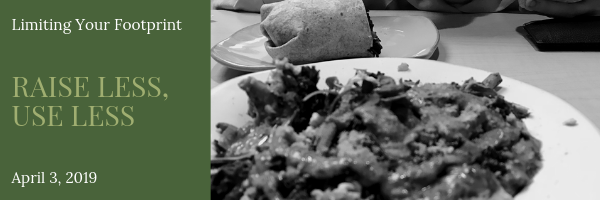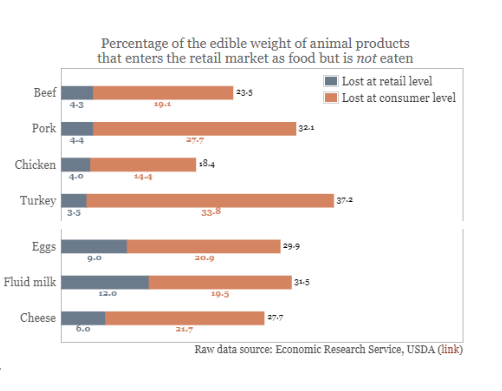
It is actually becoming quite common to be pescatarian, vegetarian, or even vegan. People have their different reasons but one of the main reasons is the environmental consequences. Knowing these consequences is key in making the sacrifice for the environment. Believe it or not, animal agriculture emits more greenhouses gases than transportation. (peta.org) This is because the entire process of raising a cow to slaughtering it for meat is lengthy and uses many resources. But greenhouses gases are not the only concern that animal agriculture creates.
First, the amount of water used to get 1 pound of beef is almost 100 times the amount of water used to get 1 pound of tofu. (peta.org) This is because raising an animal, requires water to grow food, to drink, and to clean the barn. To eliminate a significant amount of the water usage on farms, humans could just eat the crops we have been growing for the animals.
Next, animals create waste, literally. Factory farms are a huge contributor to pollution in rivers, lakes, and in the air because of the large amounts of manure. Animal waste emits toxic airborne chemicals that are known to cause a variety of health issues in humans. There is no sewage for animal waste so many farms dump it into a man made “lagoon” right on the farm’s property. As it rains and the manure gets caught in the runoff, it contaminates the groundwater and the rivers and lake it will reside. Factory farmers work around water pollution limits by spraying liquid manure over the crops and into the air around the farm. As the wind carries the manure around, humans are breathing it in and it is polluting our air. (peta.org)
Then there is the destruction of physical land. Raising animals requires grazing land and land to grow crops for the animals food. To feed a human on a vegan diet, it takes 1/20th of the land. It is known to most that the rainforests are being destroyed and it is all due to humans. However, I think many people assume that the paper and wood industries are to thank for deforestation when in fact 90 percent of the deforestation in the Amazon rainforest since 1970 was all to create space for livestock grazing. Eating off the land is more sustainable than feeding someone else off the land so you can then eat them. (peta.org)
Lastly, there is the waste that humans create in the process. Food waste is a large issue and contributes greatly to global warming. If America’s food waste was its own country, it would be third, behind America and China, in emitting the most greenhouse gases. Now, that is just considering the gases released from the physical waste as it rots in a landfill. If you consider the factors listed above, eating animals products creates a larger impact than most see. The following bar graph shows the percentage of food wasted either in the store because it was not sold or in the consumer’s home because it was not eaten.

Now, just to be clear, it is not the animals that are harming the environment. It is the way that humans are dumping resources into animals to mass produce meat and dairy products. The animals were not a large issue until we as humans decided to take control.
One way to start is to eat vegan one day a week. This is a good opportunity to experiment with recipes and learn that there is more than raw salad. Another is to completely eliminate certain products. Switch to a plant based milk, use olive oil instead of butter, stop eating red meat, etc. As you learn more about eating without animal products, you and your family can make a huge difference and limit your footprint with every meal.
Harish. “Animals We Use and Abuse for Food We Do Not Eat.” Counting Animals, 27 Mar. 2013, www.countinganimals.com/animals-we-use-and-abuse-for-food-we-do-not-eat/.
“Meat and the Environment.” PETA, 8 Jan. 2019, www.peta.org/issues/animals-used-for-food/meat-environment/.